Campaign Approach to Reaching General Audiences
To print this document, use your internet browser’s print settings to set page margins and remove the header and footer. For the best printing experience, use the Google Chrome, Firefox, or Microsoft Edge browser.
Table of Contents:
Overview
- Campaign products and initiatives are designed to help people who are vaccine hesitant—those who want to protect their health but have questions about vaccines—become more willing to consider getting vaccinated against COVID with the right information and resources. The Campaign aims to connect with Americans from all backgrounds, and the “General Audience” counts everyone across the United States. In addition to people who are vaccine hesitant, a large portion of our general audience includes those who are likely to share information with vaccine-hesitant friends and family and people who have not yet gotten a booster shot. The Campaign also specially designs messaging to reach diverse populations and those disproportionately affected by COVID, and the approach to each of these special focus communities is separately described.
- In mid-July, the United States recorded more than 89 million known cases and more than 1 million deaths from COVID. Nine out of 10 of those deaths were among people ages 50 and older, and three out of four were people ages 65 and older. The share of people ages 5 and older in the United States who have received at least one dose of a COVID vaccine is 83.4%.
- In a July 2022 national survey conducted by the Campaign, 76% of adult respondents were fully vaccinated,11% had just one dose of a two-dose vaccine, and less than 1% were unvaccinated but reported they would get a COVID vaccine as soon as possible. An additional 3% of respondents wanted to wait and see before getting vaccinated against COVID, and 9% had no intention of getting vaccinated at all.
- In the same July survey, 55% of parents with children ages 17 or younger either had already gotten their children vaccinated or planned to do so as soon as they could. Another 21% of parents wanted to wait and see before getting their children vaccinated against COVID, and 24% had no intention of getting their children vaccinated at all.
- In the same July survey, 51% of vaccinated adults reported having received at least one booster shot. Of those vaccinated adults who had not received a booster, 7% said they would get a booster as soon as they could, and an additional 23% said they would wait to get a booster.
- Among vaccinated White adults, 53% reported receiving at least one booster shot, 5% said they would get a booster as soon as they could, and 23% said they would wait to get a booster.
- Among vaccinated Black adults, 47% reported receiving at least one booster shot, 14% said they would get a booster as soon as they could, and 21% said they would wait to get a booster.
- Among vaccinated Latino adults, 45% reported receiving at least one booster shot, 12% said they would get a booster as soon as they could, and 28% said they would wait to get a booster.
- Among vaccinated Asian American/Native Hawaiian/Pacific Islander adults (AANHPI), 64% reported receiving at least one booster shot, 4% said they would get a booster as soon as they could, and 23% said they would wait to get a booster.
- Among vaccinated American Indian/Alaskan Native adults (AI/AN), 54% reported receiving at least one booster shot, 4% said they would get a booster as soon as they could, and 20% said they would wait to get a booster.
- Campaign and external research indicates that it is important to use credible, science-based information in communicating with all audiences about vaccination and to acknowledge that it is normal for people to have questions about the vaccines. The research also indicates that fact-based responses to questions about safety and effectiveness are important. Since minimizing people’s concerns about the vaccine can increase resistance, the Campaign avoids judgmental language when talking about people who are concerned about getting the vaccine.
- Campaign research shows that non-vaccinated audiences generally view their family physicians and family/friends as the most trusted sources of information about COVID. These adults tend to be skeptical of information shared by government sources and public health officials.
Audience Market Research and Testing
A robust and continuous cycle of research drives all Campaign activities.
- Primary research includes focus groups and interviews, creative testing surveys, and a weekly current events survey (a probability-based survey of 1,000 representative U.S. adults ages 18 and older), with findings provided by key demographic groups. Additional research includes audience segmentation and monitoring of news stories, social media, and secondary research. Findings are summarized for use across the Campaign.
- Additional outcome surveys and analysis, along with social listening, enable performance tracking and real-time impact assessment to inform quick adjustments to messaging in a rapidly changing environment.
Key Messages for Audience
Messaging guidance is based on qualitative and quantitative message testing insights, CDC guidance, expert recommendations of audience-specific creative agencies, environmental scans, credible external research results, social listening, and iterative testing, among other inputs.
Current Campaign messaging centers on encouraging boosters among the highest-risk populations: older adults and those with chronic medical conditions that make poor COVID outcomes more likely. Specifically relevant messages for speaking about boosters to those who are ages 50 and older include:
- During the peak of the Omicron surge, people ages 50 and older were hospitalized with COVID at twice the rate of younger adults and those ages 65 and older were hospitalized with COVID at 4 times the rate of younger adults.
- Nine out of 10 people who have died from COVID in the United States have been ages 50 or older and three out of four have been ages 65 or older.
- Nearly eight out of 10 adults ages 55 and older have a medical condition like heart or lung disease, diabetes, or cancer that makes them more likely to suffer serious illness, including death, if they get COVID.
Campaign research has demonstrated that across all audiences, messages indicating that vaccines and boosters together protect against the worst outcomes of COVID and that boosters extend protection to keep one safe from emerging variants have generally been the most effective at driving intent to get a booster shot. For audiences who said that they would “wait and see” before getting a booster shot, the following messages are a selection of those found to be most effective:
- Even mild cases of COVID have caused damage to the lungs, heart, brain, and many other organs, leading to an increased risk of long-term health problems such as strokes or seizures. Boosters give you an extra layer of protection from COVID.
- We’ve entered a new phase of the pandemic, and we know more about the virus than ever before. We know that if you're vaccinated and boosted, you're 2x less likely to get COVID than if you're unvaccinated. Getting vaccinated and boosted is your best defense against COVID.
- Just because you had COVID doesn’t mean you can’t get it again. A COVID vaccine and booster are the best way to protect yourself against serious illness, hospitalization, and death.
- Over time, vaccines may become less effective at preventing COVID. Getting your COVID booster extends your protection and keeps you safer from emerging variants.
- Getting a booster gives you extra protection from COVID, including from variants that might be more contagious or cause more severe disease.
Other Campaign messages continue to encourage parents to vaccinate their eligible children. For parent audiences overall, Campaign research indicates that messages about the benefits of being vaccinated work better than those that focus on the risks of children having COVID. For parent audiences who said that they would “wait and see” before getting children vaccinated, the following messages were shown to be most effective:
- COVID has had a tremendous impact on all children. Their lives have been interrupted by the pandemic. COVID vaccines help us keep kids in school and daycare and helps them enjoy their lives again.
- Our children rely on us from day one, and as they grow, we do everything we can to protect them. Protect your child from severe disease with a safe and effective COVID vaccine.
- Decades of research on dozens of vaccines have demonstrated that side effects usually show up within six weeks of vaccination. COVID vaccines have been studied and tested for almost 2 years in tens of thousands of adults and children, and serious side effects are very rare.
Partnerships
Bringing trusted messengers to the forefront, partnership activities leverage extensive networks across HHS and amplify tailored resources for key audiences.
Key Activities and Metrics
- National Organizations. Early in the Campaign, partnership work focused primarily on multicultural organizations at the national and local levels. Beginning in December 2021, the campaign partnered with the National Parent Teacher Association (PTA), the Boys and Girls Clubs of America (BGCA), the American Library Association (ALA), Association of Children’s Museums (ACM), National Association of Community Health Centers (NACHC), National Diaper Bank Network, Alliance for Period Supplies (APS), the American Academy of Pediatrics (AAP), and Univision to support Campaign activities through their national and local member organizations. Specifically:
- From December 2021 to February 2022, the BGCA distributed 1,280 COVID vaccines across seven states (IN, TX, FL, IL, CA, MN, MA) by implementing:
- Awareness campaigns
- Vaccine sign-ups
- Virtual outreach
- Information workshops
- The BGCA events were promoted on billboards, radio, and social media outlets, with an estimated reach of over 60,000 impressions.
- In partnership with the National PTA, we hosted a virtual webinar, Take Action to Keep Kids Safely in School: What Your PTA Can Do to Address Vaccine Hesitancy, with the goal of equipping select PTA leaders with accurate and culturally sensitive resources and practical strategies to help address vaccine hesitancy. Vice Admiral Dr. Vivek Murthy, U.S. Surgeon General, and Anna King, National PTA President, were among the panelists. A total of 344 attendees registered for the virtual webinar event. Another key activity was a panel discussion at the National PTA Symposium. Dr. Murthy, HHS Secretary Xavier Becerra, and moderator Rehema Ellis of NBC news participated. Additional activities with this partnership include the following:
- PTA affiliates in key communities hosted 108 pop-up vaccine clinics serving schools, parents, and students across the country, resulting in over 4,068 vaccinations.
- The National PTA shared resources and materials with all PTAs across the country, reaching 2.3 million members.
- The National PTA shared Campaign resources on its website and published two blogs as part of its Storytelling Highlight: We Can Do This blog series to raise national awareness about COVID vaccines, share critical Campaign resources to a broader audience, and highlight the takeaways from the February 2, 2022, national convening that included the U.S. Surgeon General and other thought leaders.
- ALA hosted a webinar featuring HHS representatives Erin Hemlin and Dr. Dipesh Navsaria, who shared campaign resources for librarians and discussed vaccinations for children. There were 182 registrants and 67 unique views during the live event that was focused on resources for librarians.
- ACM has conducted 10 pop-up clinics, at which 398 people were vaccinated or boosted.
- NACHC has conducted three webinars with one focused on nurses, the second on COVID and children, and the third sharing a newly developed campaign resource, Flipchart for Community Health Workers: COVID Vaccines for Children 6 Months and Older and the Importance of a Booster for Children Ages 5 Years and Older. NACHC also recorded a podcast on counter-narratives.
- NDBN conducted a press conference on 7/6 with Secretary Becerra and Congresswoman Rosa DeLauro (CT-3), the CEO of Fair Haven Community Health Care Dr. Suzanne Lagarde, and Dr. Jody Terranova, Vice President and President-elect of the Connecticut Chapter of the AAP.
- APS conducted a recruitment webinar on June 29 to recruit local period supply programs to distribute Campaign materials to their program participants. There are 22 programs confirmed with a goal of 50 programs to participate.
- AAP provided subject matter experts (SME) to support partnership activities such as informational webinars, blog posts, podcasts, and in-person panel discussions for organizations, including the National PTA, the Health Initiatives of the Americas, and the ALA.
- Univision hosted a vaccine informational booth during large youth amateur soccer tournaments in Dallas, TX, and Houston, TX. At each event, over 800 attendees visited the booth and received Campaign materials. Copa Univision promoted the Campaign via television, radio, and digital ads with impressions estimated at 4,654,689 for the Dallas event, and 4,111,695 for the Houston event. The Campaign partnered with Walgreens to schedule vaccine appointments and provide vaccines and boosters on site, resulting in 29 vaccine appointments and 21 people vaccinated or boosted.
- From December 2021 to February 2022, the BGCA distributed 1,280 COVID vaccines across seven states (IN, TX, FL, IL, CA, MN, MA) by implementing:
Toolkits
- The Campaign has created numerous toolkits to provide communication materials for partner organizations as well as resource collections to bring together available Campaign materials on a specific subject, such as to promote booster doses or encourage parents to vaccinate their kids. Many toolkit materials are available in the top languages widely spoken in the United States by people for whom English is not their first language. A selection of toolkits are linked below:
Paid Media
Key Activities and Metrics
The team has created surround-sound, broad-reaching paid media across all platforms, targeted nationally (television/radio), regionally (television/radio/print/out of home [OOH]), and hyperlocally (digital OOH/digital/social).
- Ads are tailored to population needs to increase vaccine confidence while reinforcing basic prevention measures and to increase vaccine uptake by communicating how and where to get vaccinated.
- Beginning in late June, the paid campaign is aimed at reaching people who are 50 and older about COVID boosters.
As of April 2022, the Campaign has delivered nearly 60 billion paid media impressions across media types (e.g., paid search, digital media, and offline media like TV, print, and radio).
- Campaign paid advertising reaches more than 90% of Americans each month, more than 20 times per month on average (Nielsen, June 2022).
Milestones
- Early in the Campaign, Slow the Spread efforts reinforced basic prevention measures with ads in radio, newspaper, digital, and social media.
- Building Vaccine Confidence, the Campaign’s advertising push, included TV, radio, newspaper, digital and social media, and digital OOH has evolved with the course of the pandemic. Initially, the Campaign focused on older adults as the first eligible population for vaccinations, then targeted health navigators: the health care decision-makers in families, young adults, and parents of children who are eligible for vaccination. Tailored ads to encourage boosters for the vaccinated are also part of the Campaign.
- Protecting the Nation (PTN) uses social, digital, and search ads to answer frequently asked questions about COVID vaccines and dispels emerging misconceptions through factual, research-based messaging. Using trusted messenger videos in PTN ads enhances the ability to produce a significant change in targeted attitudes and beliefs and to increase vaccine uptake.
Earned Media
Earned media uses trusted messengers and market-tested messages to engage and inform audiences and to encourage vaccination.
Key Activities and Metrics to Date
- The Campaign focuses its earned media outreach on placing local doctors as trusted messengers in local news outlets to answer current questions about vaccination. Focusing on a primary audience for each month—the unvaccinated, parents of unvaccinated children, or booster eligible—we refine the messaging and target four states where that audience is prevalent. In those four states, we conduct television, radio, and print interviews and release a ready-to-use article. We also choose target states for the other two audiences and proactively pitch local doctors from those states for radio and print interviews.
- At the end of July 2022, we have placed more than 100 doctors in news programs in 40 states, resulting in nearly 26,000 syndicated airings or postings of more than 960 original stories for a reach of more than 1.15 billion broadcast/online impressions.
- Special topic media briefings provide another opportunity to bring local trusted messengers and HHS spokespeople to a larger audience. For example, when the authorization for the vaccine for 5–11-year-old children came into effect, we held a press briefing that featured Dr. Murthy; Dr. Lee Ann Savio Beers, President, AAP; Dr. Kenneth Alexander, Nemours Children’s Hospital; and Dr. Jody Thomas, The Meg Foundation. The briefing had over 30 media outlets in attendance, including Parents magazine, Parents.com, BabyCenter, Scary Mommy, and What to Expect.
- Campaign partner iHeartMedia provides opportunities for both HHS spokespeople and local doctors on a variety of nationally syndicated and regional radio programs. Since January 2021, we have placed 29 HHS spokespeople and nearly 60 local health care professionals on iHeart Media programs, including Elvis Duran and the Morning Show, On Air with Ryan Seacrest, a weekly spot on the Communities national public affairs program, and in multiple state public affairs programs. The Campaign has delivered more than 235 million impressions from these opportunities to date.
- We collaborate with partners like the National Association of Broadcasters and the Ad Council to provide HHS-approved messages for their vaccine information campaigns. The Campaign has supported the Ad Council’s campaign, It’s Up to You, by putting paid weight behind their digital advertising, which delivered more than 1.5 billion impressions in early 2021.
Trusted Messengers
The Campaign’s influencer strategy is to cultivate and collaborate with a range of messengers, including community leaders, celebrities, musicians, artists, entertainers, medical experts, digital creators, and similar influencers to amplify Campaign messaging to target audiences. Our goal is to increase trust and confidence in the COVID vaccines with our key audiences by strategically leveraging an individual's influence with their followers.
For the general audience, the focus is on outreach to young adult and parent influencers, technology collaborations, and media partnerships.
Key Activities and Metrics
- Reddit, in coordination with the Office of the Surgeon General, hosted a Reddit Ask Me Anything (AMA) session featuring Dr. Murthy, giving audiences the opportunity to ask questions about COVID, the pandemic's impact on youth mental health, and the importance of being up-to-date with COVID vaccinations. The AMA session generated over 300 comments and Dr. Murthy was able to respond to 21 unique questions. This effort delivered 23.7 million impressions, reached over 7.5 million users, and drove 79,129 clicks—38% of the clicks were driven by post-AMA ads, which led users to the AMA thread.
- Collaborations with content creators include these recent successes:
- Activated five BuzzFeed creators of diverse backgrounds via paid promotion and organically through social content to reach young adults. Their content delivered over 47.1 million paid impressions and 245,631 organic impressions, drove 65,000+ engagements, and garnered almost 60,000 clicks to vaccines.gov.
- Activated three Twitter ArtHouse diverse creators to create content for young adult audiences, delivering engagement rates that were 3.7 times stronger than Twitter’s government benchmark and 3.4 times stronger than Campaign non-influencer creative. Overall, the content drove over 35.9 million impressions, close to 750,000 clicks, 1.4 million engagements, over 10.7 million video views, and reached over 12 million users on Twitter.
- Twitter and Opendorse partnered with four diverse NCAA student-athletes who created custom video messages that they posted to their own Twitter handles and then boosted through a paid effort running during the NCAA basketball tournament to mid-April. Overall, all content drove over 4.6 million impressions, 3.2 million video views, and has reached over 1.7 million users on Twitter.
- Through City Mom Collective, we launched two hyperlocal influencer campaigns nationally:
- The first effort in December 2021 through January 2022 engaged 27 local sister sites (collectives of local moms) in 27 geographic markets, creating social and digital content that generated more than 2 million impressions. A second effort beginning in March 2022 engaged 28 local sister sites in 28 geographic markets, conducting video Q&As with local physicians and launching social and digital content to promote and recap the interviews.
- Through Mom 2.0, we built two national influencer campaigns:
- The first effort collaborated with 27 parenting influencers, including actor/singer/mom Kelly Rowland, and digital networks, creating and amplifying social and digital content that generated nearly 2 billion impressions through January 2022. A second campaign effort beginning in March 2022 collaborated with 37 parenting influencers, including actor and mom America Ferrera, and digital networks, creating and amplifying social and digital content. The second effort also included a Twitter chat on June 7 featuring Dr. Murthy, who answered parents’ frequently asked questions about vaccines for children 5 years and older.
- Working through Athletes for Hope, a nonprofit that helps connect athletes with causes they care about, the Campaign launched school-specific “Get the Shot” PSAs in venues, on game broadcasts, and on social media with Big 12 Conference institutions (10 universities in Iowa, Kansas, Texas, Oklahoma, and West Virginia), featuring football, soccer, and volleyball athletes and coaches.
- Campaign ads have also run in-venue at sporting events such as the Reese’s Senior Bowl in Mobile, AL; the World Cup qualifying match for the U.S. Men’s National Soccer Team in Orlando, FL; and through the 24-stop Stars on Ice tour that additionally featured a Campaign PSA with Olympic gold medalist Nathan Chen.
Creative Sample
- Slow the Spread: Digital ad. Launched March 2021.
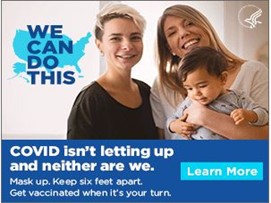
- "It’s Time": Television ad reminding people that vaccines can help us push back against COVID-19. Launched April 2021.
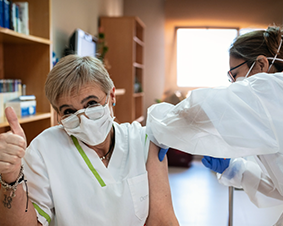
- "Survivor Story: Katelyn": A digital testimonial ad for young adults. Launched February 2022.
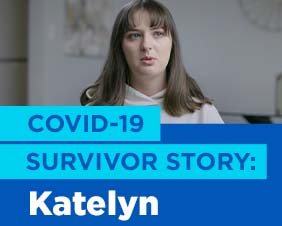 .
. - "Say, “I Do” With a Booster": A digital ad for young adults. Launched April 2022.
 .
. - "COVID Vaccine Fast Facts: Booster Shots": Protecting the Nation digital ad. Launched November 2021.
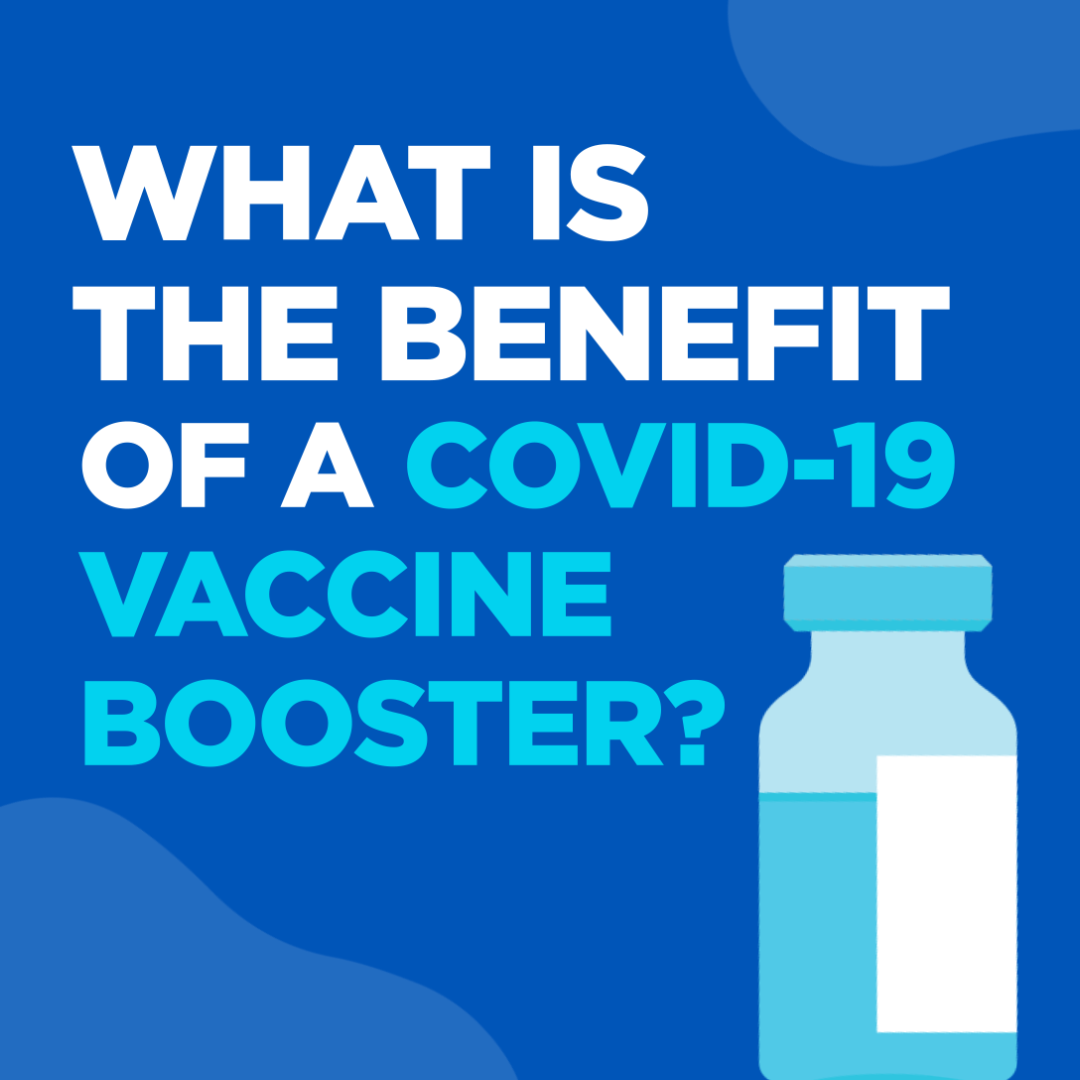
- "Fewer": Television advertisement encouraging people to get a booster to increase their protection against COVID-19. Launched January 2022.
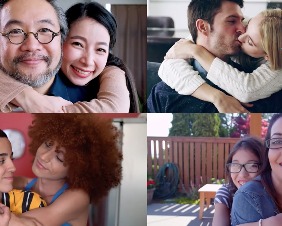
- "Oath": Television, social, and digital ad for parents of children 5+. Launched in April 2022.
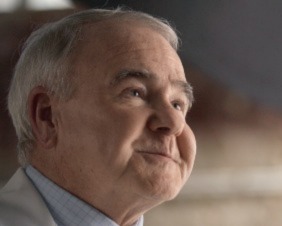
- Big Deal:Television ad encouraging audiences ages 50 and older to get a COVID booster. Launched in June 2022.
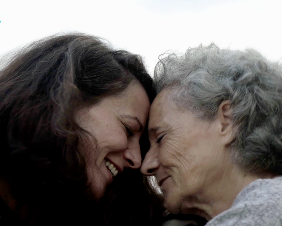
- Does needing a booster mean your COVID vaccine isn’t working?:Protecting the Nation digital ad. Launched in March 2022.
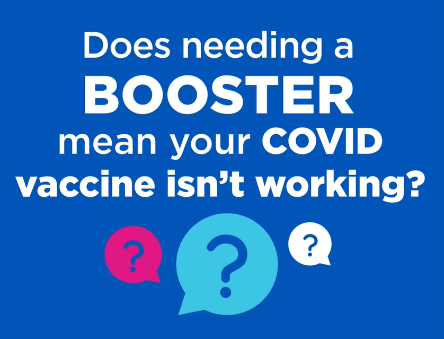
Contact Us
Please visit cdc.gov/coronavirus for more information on COVID, or visit WeCanDoThis.HHS.gov and click on “Contact Us” for questions about HHS’s work to boost public confidence in vaccines.
